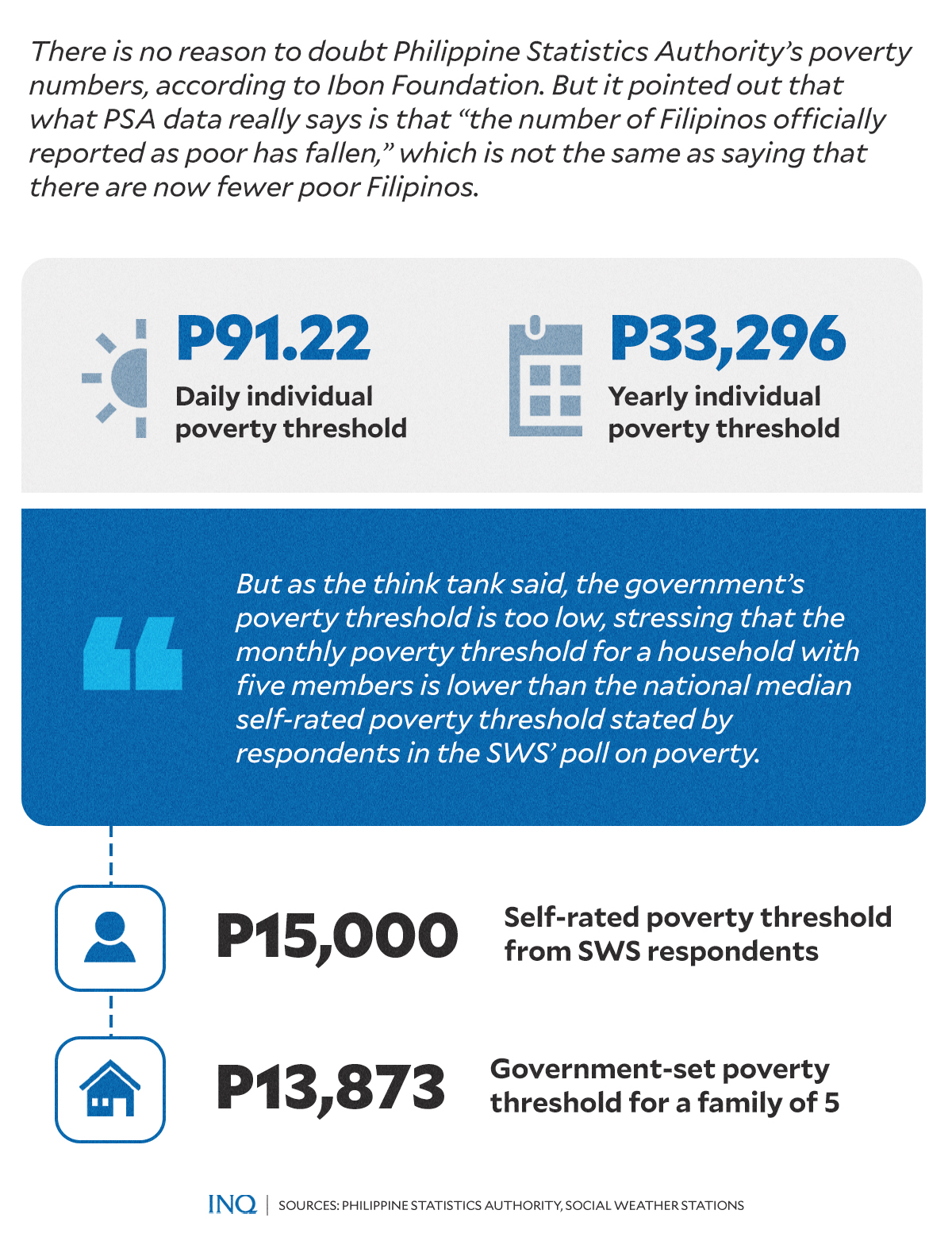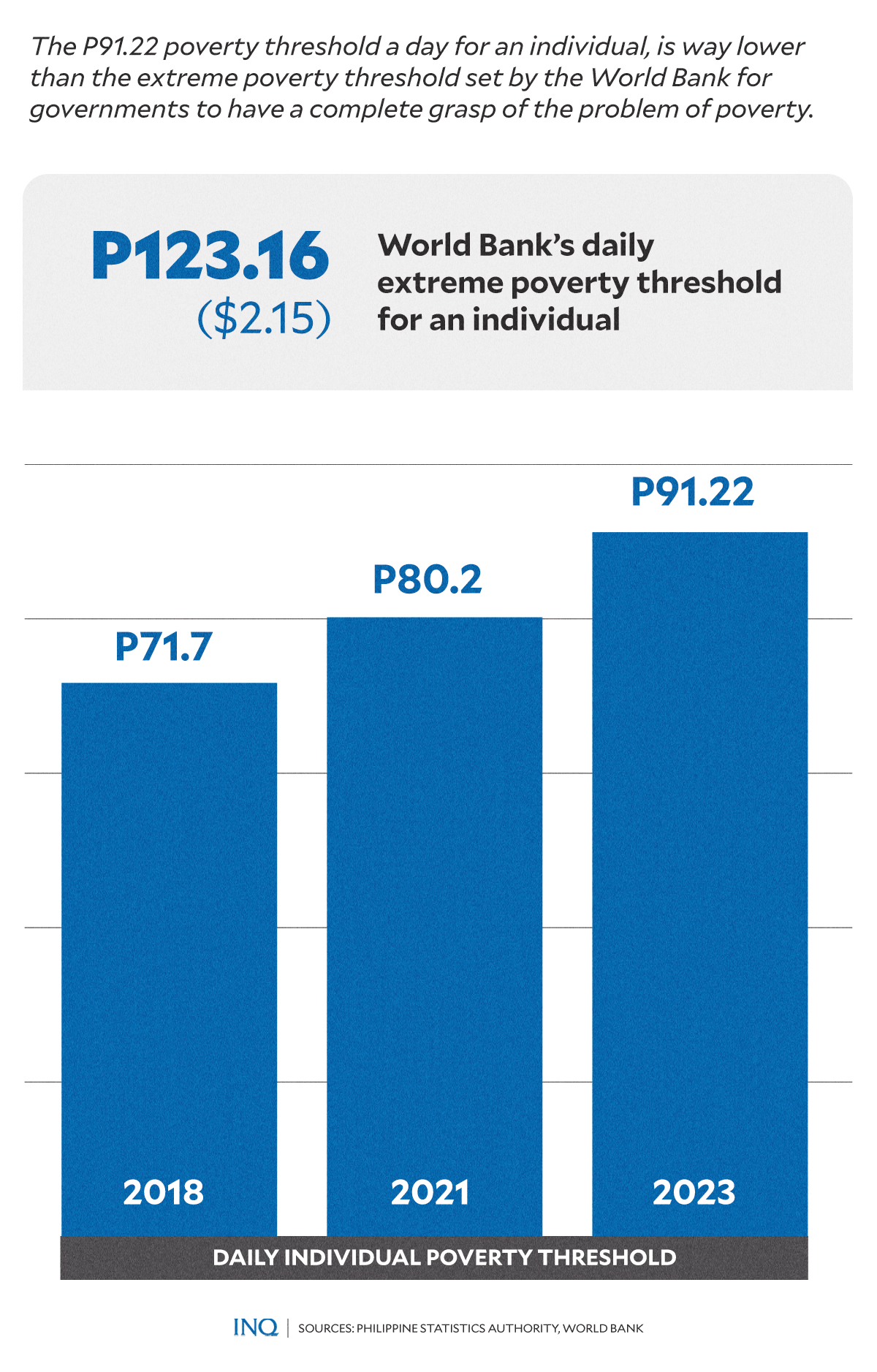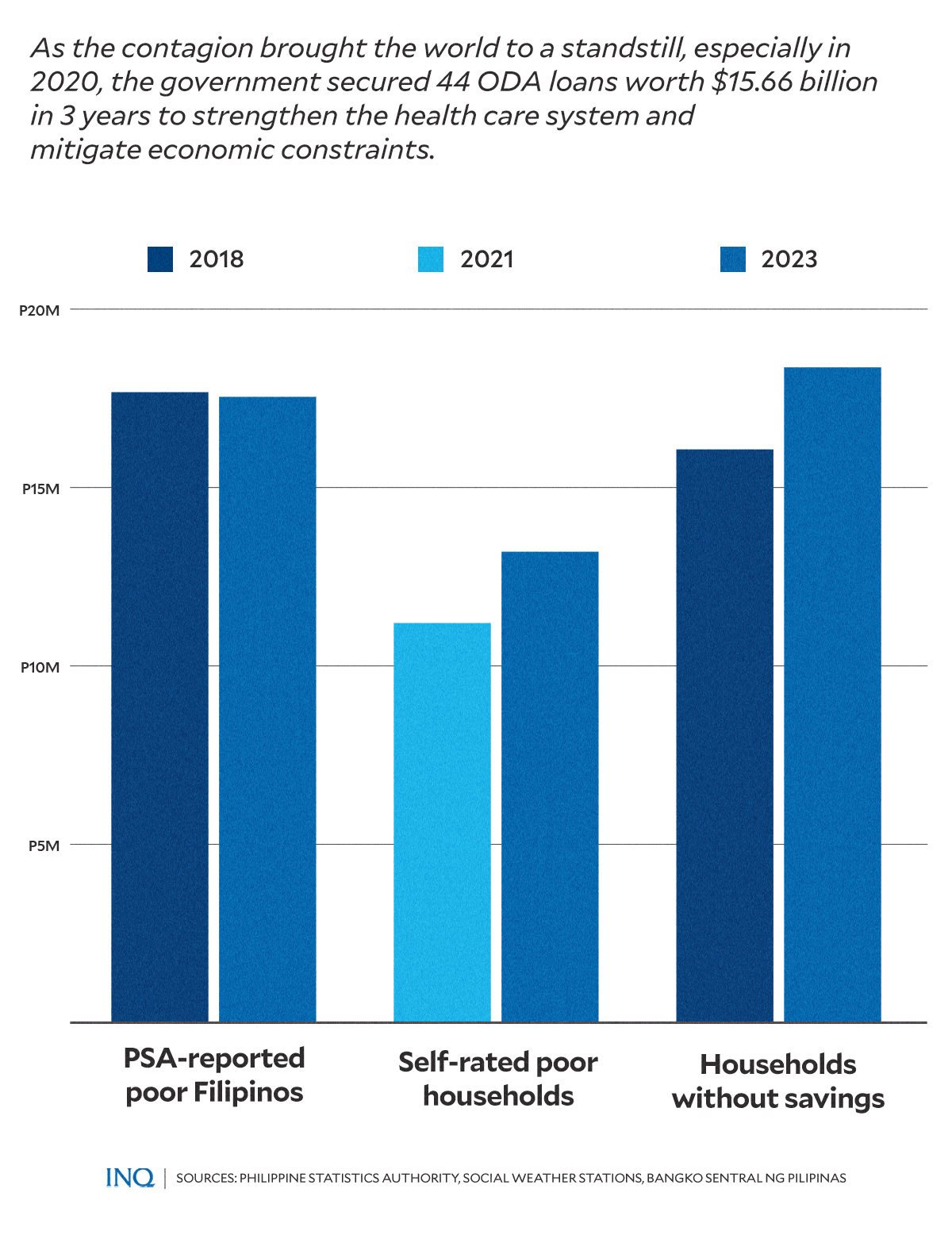Are there fewer Filipinos as government data tend to show?
The question was posed by local think tank Ibon Foundation as President Ferdinand Marcos Jr. stressed what he described as a “significant drop” in poverty rate during his third state of the nation address (Sona) last July 22.
READ: HIGHLIGHTS: Sona 2024
“Halos dalawa’t kalahating milyong Pilipino ang naiangat natin mula sa kahirapan (We were able to lift almost 2.5 million Filipinos out of poverty),” he said, citing data showing that poverty incidence fell to 15.5 percent in 2023 from 18.1 percent in 2021 before he assumed office.
READ: TRANSCRIPT: 3rd Sona of President Ferdinand Marcos Jr.
According to initial result of the latest Philippine Statistics Authority’s (PSA) Family Income and Expenditure Survey (FIES), 17.54 million Filipinos were considered poor in 2023, down from 19.99 million in 2021.
As he went on with his Sona, Marcos added that over 1.7 million Filipinos are no longer “food poor,” indicating that they already have income enough to meet their basic food requirements.
But while Marcos’ assertion was based on PSA data, which showed that the proportion of “food poor” Filipinos fell to 4.3 percent from 5.9 percent, Ibon Foundation stressed that the government should take a closer look.
“Most that this (FIES) really says is that the number of Filipinos officially reported as poor has fallen – which is unfortunately not the same as saying that there are now less poor Filipinos,” it said.
Poverty line unrealistic
According to Ibon, “all the PSA data shows is that the income of the very poorest Filipino households increased enough to bump them above the unrealistically low official poverty line.”
RELATED STORY: A second look at poverty
It explained that the official poverty threshold, or the income level below which one is considered poor, is set at a national average of P91.22 each person a day, or P13,873 a month for a household with five members.
“This is evidently too low to provide for a person’s basic needs – for food, housing, utilities, transport, communication, education, health, and clothing in the modern era,” said the think tank.
The extreme poverty threshold, set by the World Bank, has already shifted from $1.90 (P108.84) to $2.15 (P123.16) a day in a bid to provide governments with a complete grasp of the problem of poverty.
Pointing to data collected by the Social Weather Stations (SWS) since 1986 and the Bangko Sentral ng Pilipinas (BSP) since 2004, Ibon Foundation stressed that the government’s official standard for poverty is “insufficient.”
RELATED STORY: PH poverty rate falls to 15.5% in 2023 – PSA
The yearly average of SWS’ self-rated poverty shows consistency with 48 percent in 2018, 46 percent in 2021 and 48 percent in 2023, but “looking at both self-rated poor and borderline rates for a broader measure of poverty and risk is even more disturbing.”
Based on SWS data, self-rated poor and borderline poor Filipinos were 76 percent in 2018, 80 percent in 2021 and 79 percent in 2023. Ibon Foundation said that the median self-rated poverty threshold from SWS respondents is P15,000 a month.
Poverty ‘widespread’
As the think tank stressed, the actual experience of most Filipinos will likely affirm that the SWS data, and even the result of the BSP’s Consumer Expectations Survey, “are closer to the truth of Philippine poverty.”
READ: PH poverty: You’re not poor if you spend more than P18.62 per meal
The percentage of Filipino households without savings is said to be “persistently high and has even risen” from a yearly average of 65 percent in 2018 to 72 percent in 2021 and 69 percent in 2023.
With this, Ibon estimated that the number of households without savings grew from 16.1 million in 2018 to 18.4 million in 2023. It made clear, however, that these data do not contradict the official poverty statistics of the PSA.
“They measure different things,” it said, stressing that the PSA’s 2023 FIES results show that the income of 2.5 million among the very poorest increased enough to carry them over the official poverty threshold and to no longer be reported as poor.
The SWS and BSP results, meanwhile, “paint a broader picture of much more widespread poverty according to self-rating and household savings metrics,” said the think tank, which stressed that 18 to 22 million households should be considered poor.
RELATED STORY: Gov’t data, polls dispute Gadon’s poverty take as ‘haka-haka’
It said that better-looking poverty statistics should not be the goal: “The real goal should be development for the economy and the people, where being lifted above the income-based poverty line is just a natural consequence of such development.”
“There is much to be done to develop the Philippines,” Ibon said.
One of the first steps, it pointed out, is be more honest about the real extent of poverty and underdevelopment. There are no single perfect indicators and many relevant metrics have to be looked at to form as accurate and complete a picture as possible.
“It is also important to ensure that each indicator is as realistic as possible. It goes without saying that claiming great strides in reducing poverty using a low and grossly unambitious standard is counterproductive,” it said.
READ: Delayed or not, will higher PH income status mean better Filipino lives?





